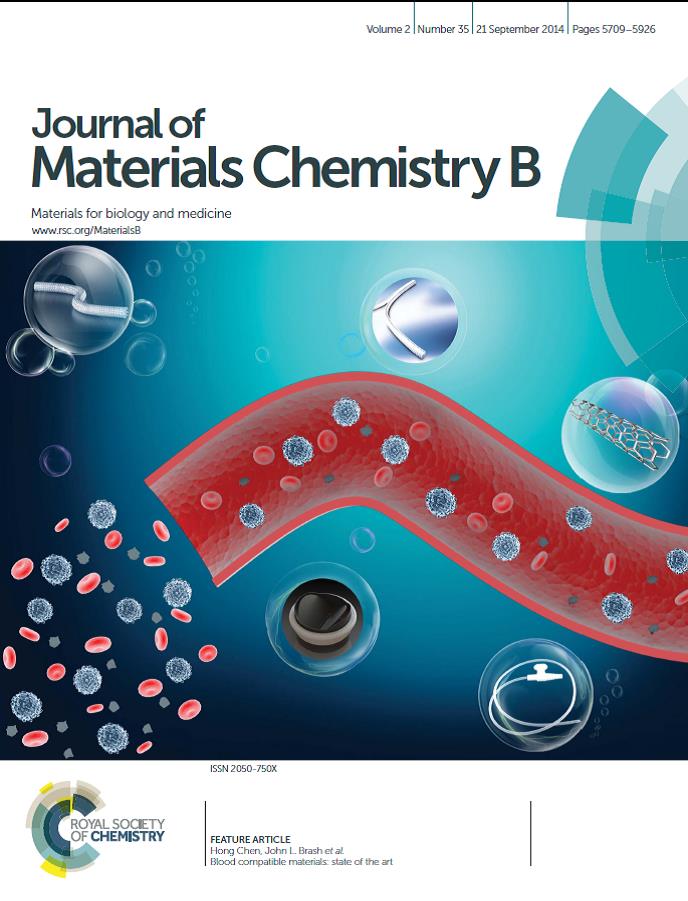Blood compatible materials: state of the art
Journal of Materials Chemistry B,
2014,
2,
5718-5738.
文章链接:http://dx.doi.org/10.1039/c4tb00881b
刘小莉博士在Journal of Materials Chemistry B上发表综述论文
发布日期:2014-10-05
Devices that function in contact with blood are ubiquitous in clinical medicine and biotechnology. These devices include vascular grafts, coronary stents, heart valves, catheters, hemodialysers, heart-lung bypass systems and many others. Blood contact generally leads to thrombosis (among other adverse outcomes), and no material has yet been developed which remains thrombus-free indefinitely and in all situations: extracorporeally, in the venous circulation and in the arterial circulation. In this article knowledge on blood–material interactions and “thromboresistant” materials is reviewed. Current approaches to the development of thromboresistant materials are discussed including surface passivation; incorporation and/or release of anticoagulants, antiplatelet agents and thrombolytic agents; and mimicry of the vascular endothelium.

